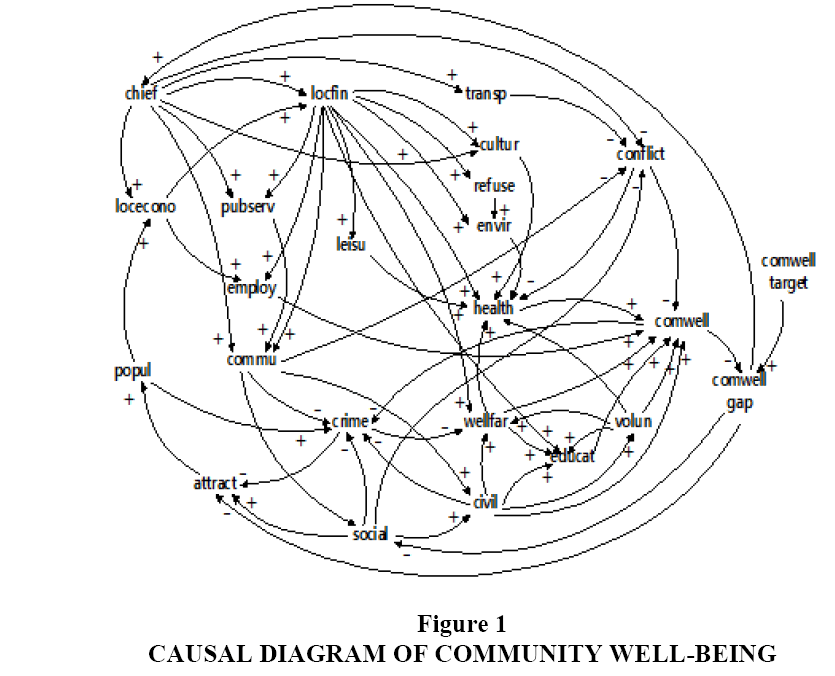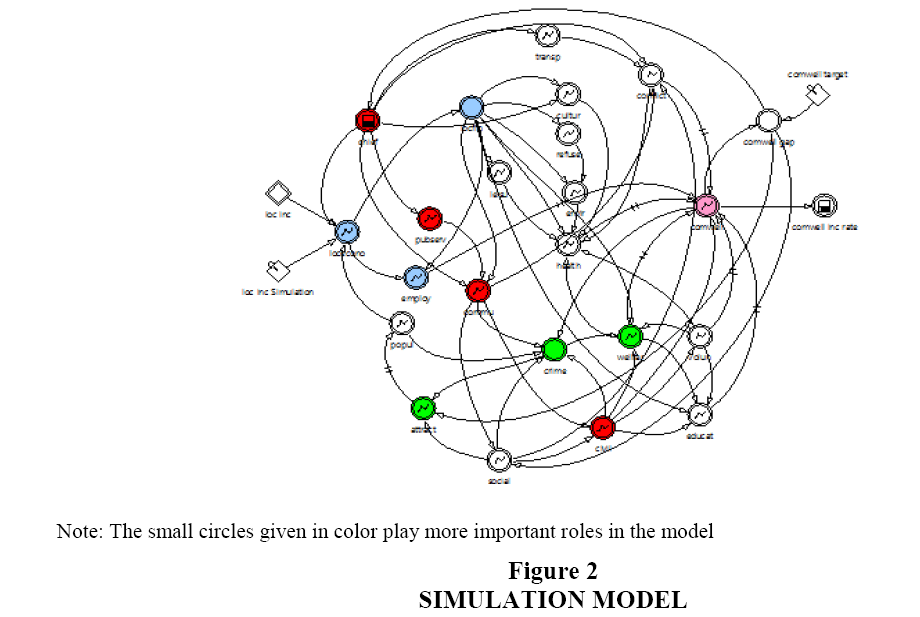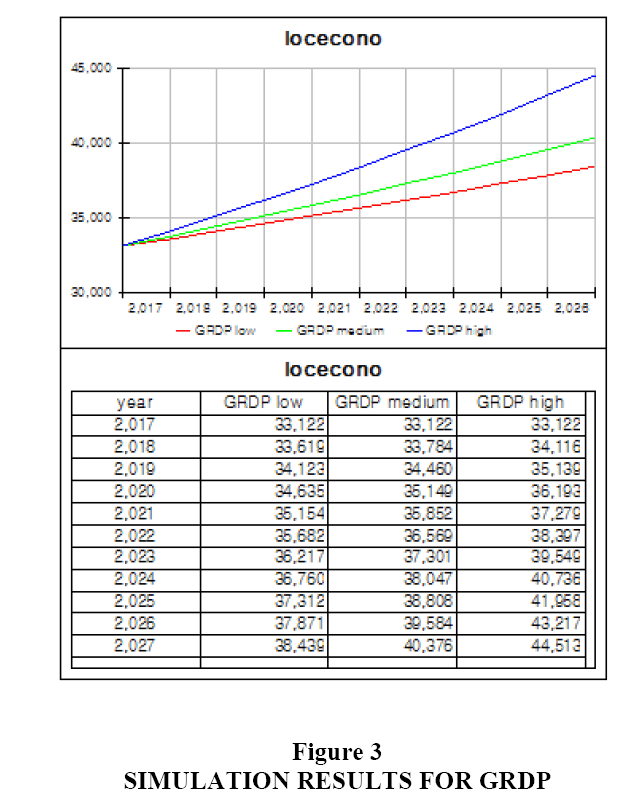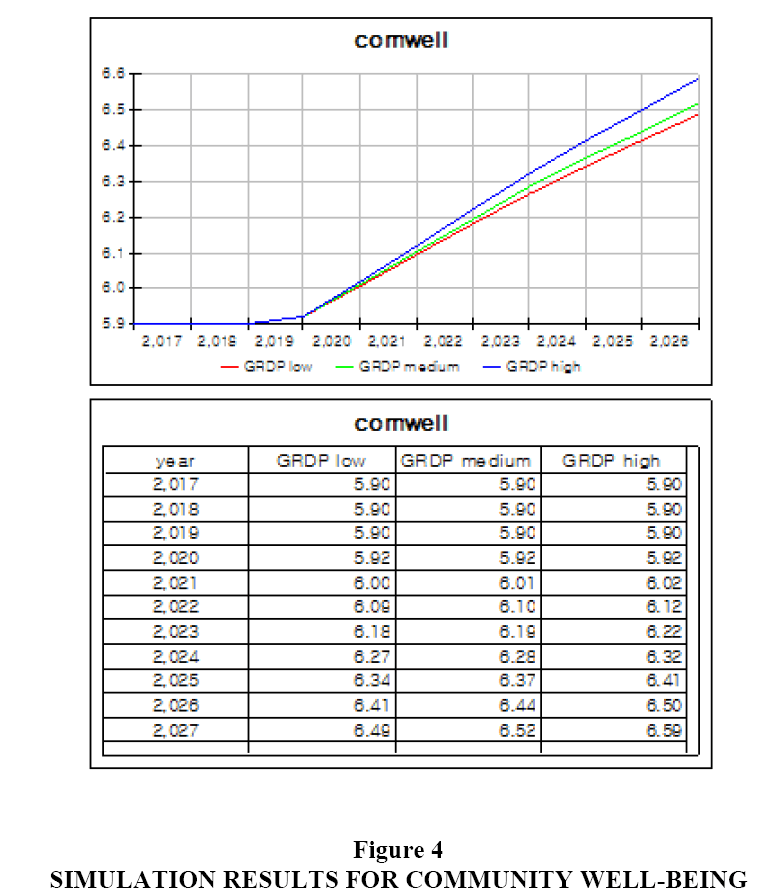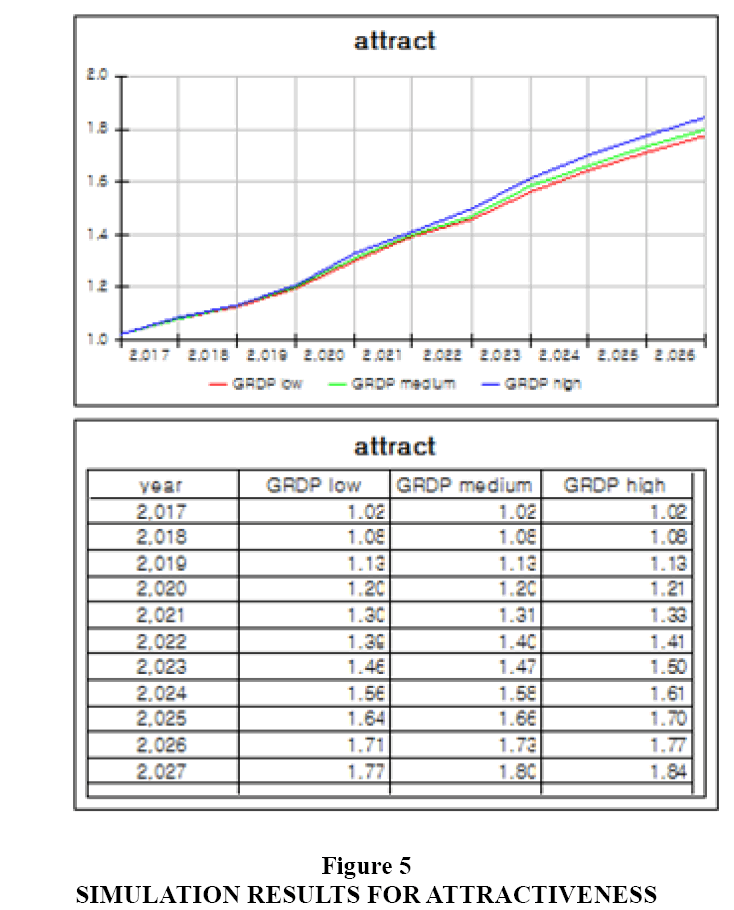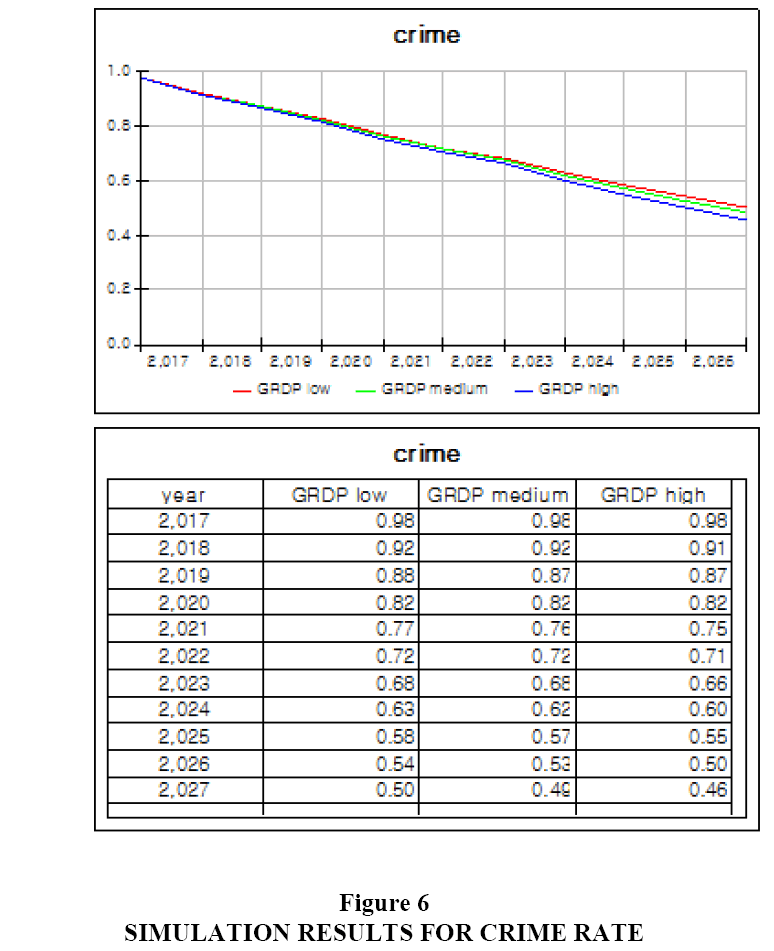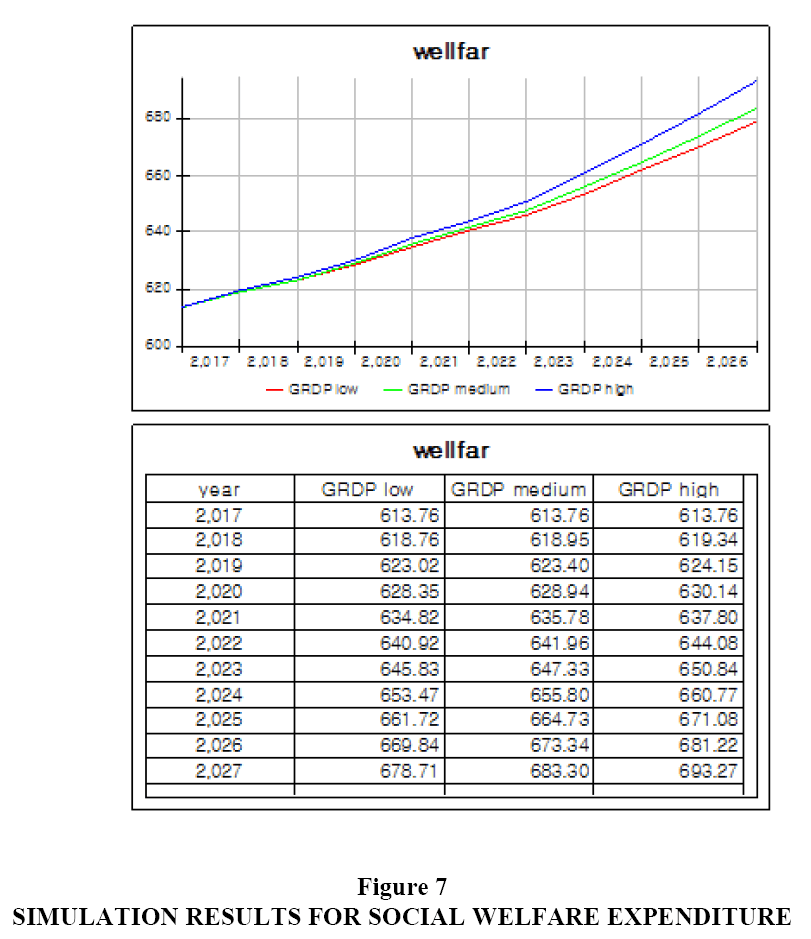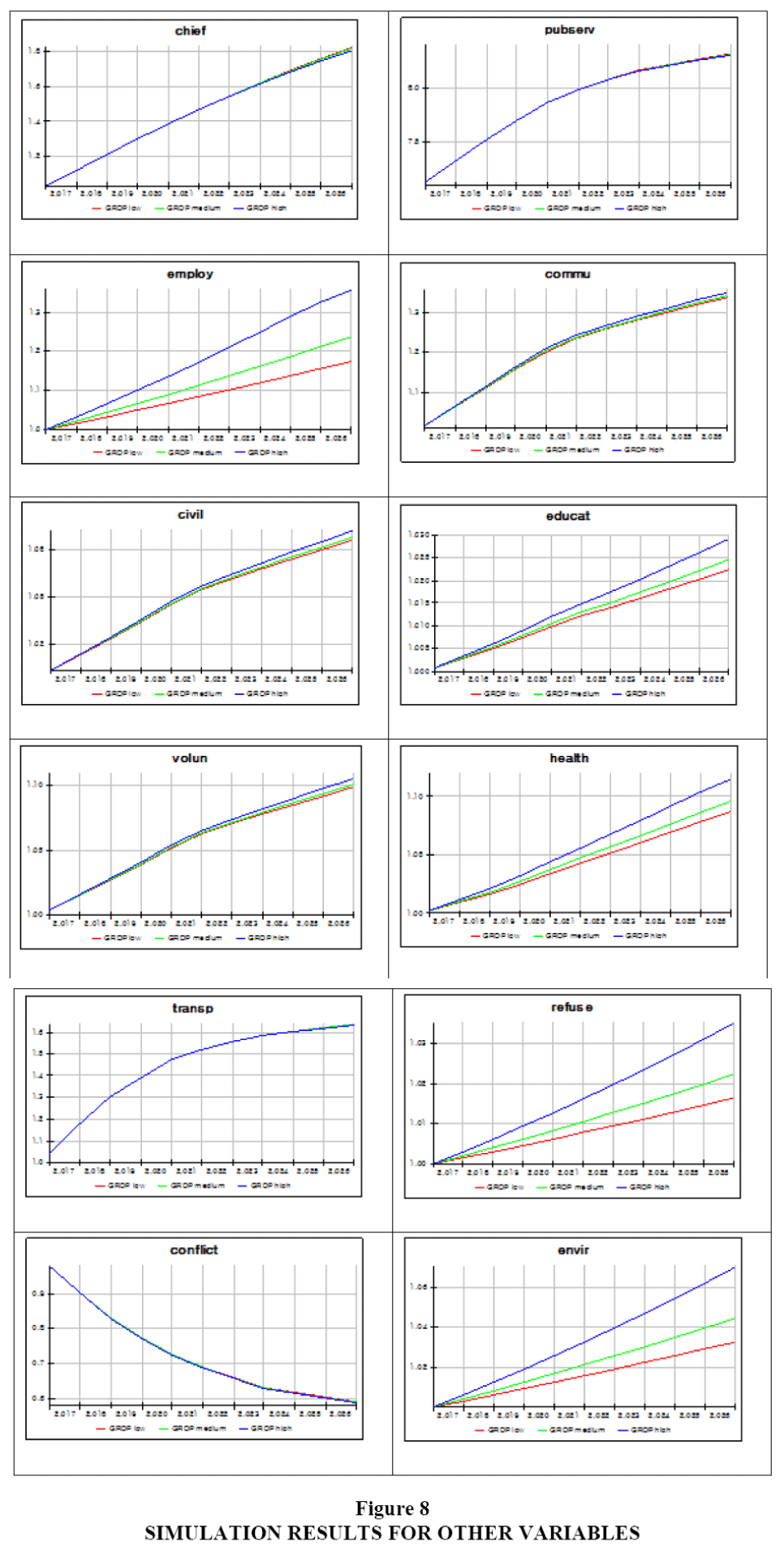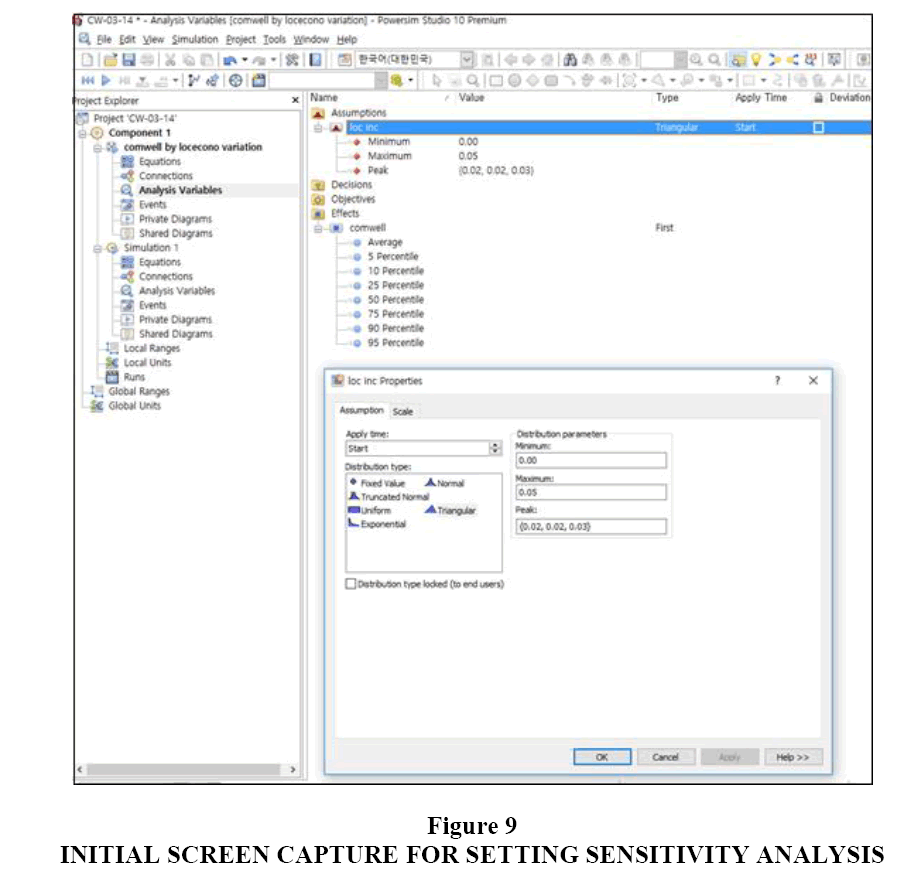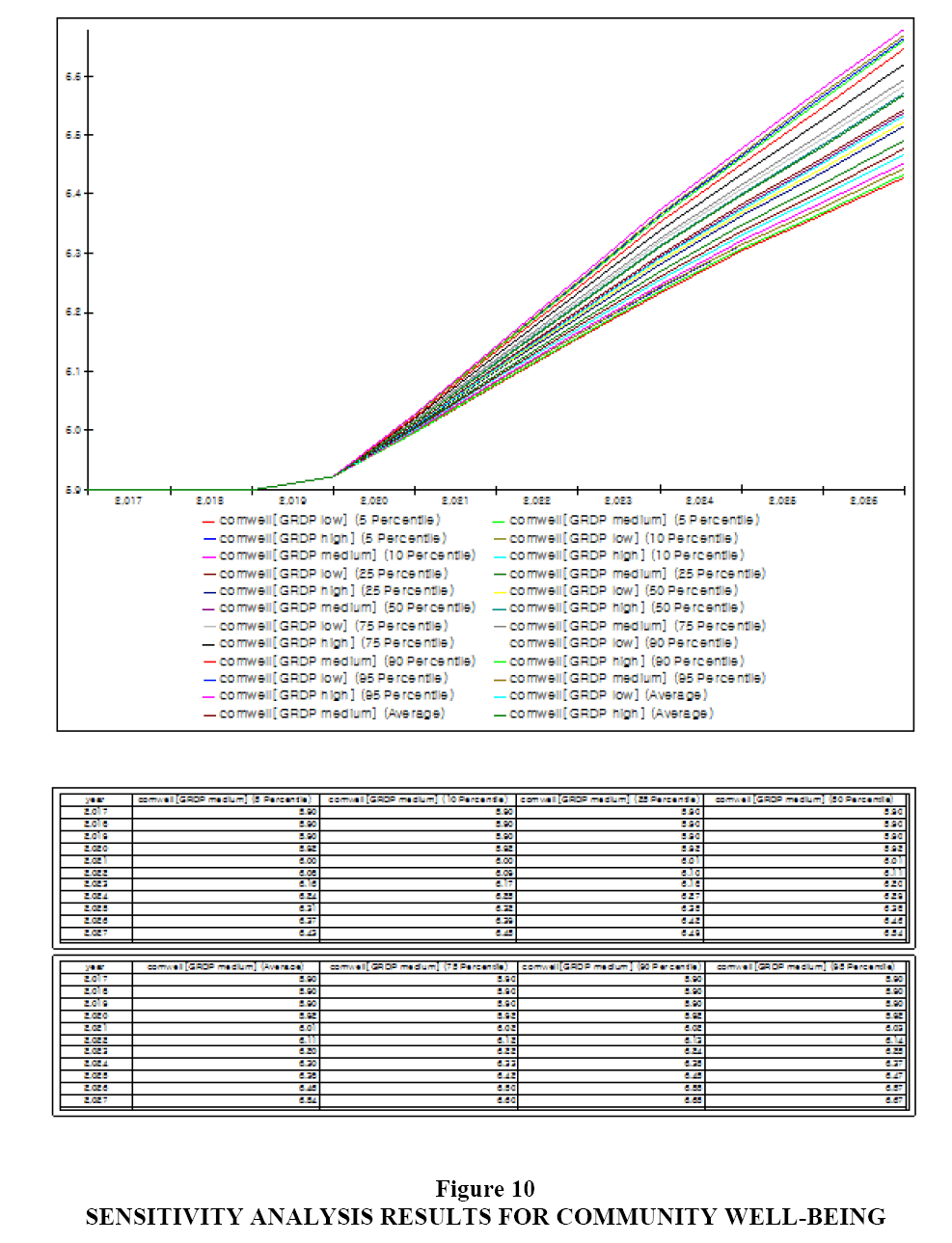Research Article: 2017 Vol: 21 Issue: 3
Constructing and Analysing Policy Scenarios for Community Well-Being Using System Dynamics:The Case of Seoul Metropolitan City, Korea
Ji-Hyun Jang, Sanymyung University, Korea
Min-Je Choi, Korea University, Korea
Abstract
This paper puts forward policy scenarios for community well-being in Seoul Metropolitan City, Korea using system dynamics and the sensitivity analysis method, scenarios which it is hoped will be of great benefit to policy-makers and practitioners involved in the field of community well-being. In the process, it attempts to predict what, if these policy scenarios are applied, will happen in the area of community well-being and related phenomena in Seoul City in the future. In so doing, the paper constructs a causal model in order to analyse the complex interrelationships between the factors affecting community well-being in Seoul and to simulate the possible behaviour of community well-being over the period 2017-27.
Keywords
Community Well-Being, System Dynamics, Systems Thinking, Sensitivity Analysis.
Introduction
Community well-being has recently become a hot topic in the area of the social sciences, since issues regarding factors such as happiness, quality of life, life satisfaction and well-being are becoming more important at the community level (as opposed to the individual level). Accordingly, a great deal of research on the subject has been conducted by social scientists worldwide. One of the characteristics underlying this research is that objective, concrete policy suggestions have not been put forward; rather, these works have focused primarily on measurement issues and on theoretical discussion about the definition of related terms such as ‘happiness’, ‘well-being’, ‘life satisfaction’ and ‘quality of life’ (Mogilner, 2010; Mogilner et al., 2011; OECD, 2013, 2014; Seligman, 2004; Tanzi and Schuknecht, 1998; UN, 2013). As a result, few works of policy analysis have been produced to date and few policy suggestions on community well-being issue have as yet been put forward. In order for policymakers and policy implementers in the field of community well-being to be able to contribute to policy improvement, decision-making on community well-being needs to be effective and based on evidence.
Effective decision-making and learning in a world of growing dynamic complexity require us to become system thinkers-to expand the boundaries of our mental models and develop tools that will enable us to understand how the structure of complex systems creates their behaviour. Against this background, this paper tries to construct policy scenarios for community well-being in Seoul Metropolitan City in Korea using system dynamics and the sensitivity analysis method, scenarios which it is hoped will be of great benefit to policymakers and practitioners involved in community well-being and which, if applied, might help them to predict what will happen in Seoul City in the area of community well-being and related phenomena in the future.
Literature Review
Since at least the time of Aristotle, philosophers have been interested in well-being, understood in terms of the qualities of a good life or a good society. For Aristotle, living a good life meant achieving one’s potential in the areas of knowledge, health, friendship, wealth and other life domains. Fifteen years ago, some scholars (Diener, 1984; Diner and Seligman, 2003) proposed a new science of well-being focused on explaining positive states of mind and taking seriously people’s expressed subjective assessments of their own emotions and quality of life (Lim, 1996; Lyubomirsky et al., 2005; Western and Tomaszewski, 2016).
Following Kahneman, Diener and Schwartz’s work, social scientists’ and policymakers’ interest in the nature and determinants of well-being has grown. Two conceptual approaches to well-being research now dominate the field. The objective approach defines well-being in terms of quality of life indicators such as material resources and social attributes (education, health, social network). The subjective approach emphasizes subjective well-being, that is, people’s own evaluation of their lives, especially life satisfaction (a cognitive evaluation), happiness (a positive emotional state) and unhappiness (a negative emotional state) (Western and Tomaszewski, 2016).
Apart from these works, there have been numerous works (Andrews and Withey, 1976; Argyle et al., 1989; Ben-Arieh, 2006; Campbell et al., 1976; Choi, 2008; Choi and Moon, 2011; Diener, 1984) addressing well-being, happiness, quality of life and life satisfaction. There are two things to be noted about these previous works on happiness-related issues (Diener and Chan, 2012; Diener and Seligman, 2002; Dunn et al., 2008; Kee et al., 2014; Lee and Kim, 2014; Lim, 1996; Soh, 1998; Yang, 2008). First, despite the plethora of research works exploring these issues, it is still not clear how similar terms such as ‘happiness’ and ‘well-being’ should be differentiated. Secondly, the majority of these works have focused primarily on either theoretical or philosophical discussion of the issues or on measurement. As a result, there have been few works investigating how levels of happiness or well-being might be increased, how to predict results relating to well-being and what policy scenarios might be applied to raise levels of well-being. For these reasons, we attempt here to construct policy scenarios for community well-being, to simulate them and to conduct sensitivity analysis so as to predict future community well-being under conditions of uncertainty.
Research Design
System Dynamics and Sensitivity Analysis
This research employs system dynamics and sensitivity analysis. System dynamics is a methodology and mathematical modelling technique designed specifically to frame, understand and discuss complex issues and problems. Originally developed in the 1950s to help corporate managers improve their understanding of industrial processes, the technique is currently being used throughout the public and private sector for policy analysis and design. System dynamics is an aspect of systems theory, which is a method for understanding the dynamic behaviour of complex systems. The basis of the method is the recognition that the structure of any system-the many circular, interlocking, sometimes time-delayed relationships between its components-is often just as important in determining its behaviour as the individual components themselves. Examples are chaos theory and social dynamics. Proponents of the method also claim that because there are often properties of the whole which cannot be found among the properties of the individual elements, in some cases the behaviour of the whole cannot be explained in terms of the behaviour of the parts (Sterman, 2000; Wikipedia, 2017).
Sensitivity analysis is the study of how uncertainty in the output of a mathematical model or system (numerical or otherwise) can be apportioned to different sources in its inputs. A related practice is uncertainty analysis, which places a greater focus on uncertainty quantification and propagation; ideally, uncertainty and sensitivity analyses should be run in tandem (Saltelli, 2002).
Variables and Causal Diagram
The variables employed in this analysis are explained in Table 1 and are depicted in the causal diagram shown as Figure 1.
| Table 1 Variables Affecting Community Well-Being |
|||
| Head of local government | Positivity of head of local government towards community well-being | chief | 1-10 (subjective judgement) |
| Local economy | Current state of local economy | locecono | Actual data |
| Population | Population of community | popul | Actual data |
| Integrity of public servants | Integrity of public servants working for residents | pubserv | Questionnaire survey |
| Employment rate | Current employment rate | employ | Actual data |
| Degree of communication between residents and public organization | Degree of positive communication between community residents and public organizations | commu | 1-10 (subjective judgement) |
| Autonomy of local finance | Level of autonomy of local finance | locfin | Actual data |
| Level of leisure facilities | Level of leisure facilities to be accessed | leisu | 1-10 (subjective judgement) |
| Crime rate | Crime rate | crime | Actual data |
| Attractiveness of community | Attractiveness of community, to induce population influx | attract | 1-10 (subjective judgement) |
| Social capital of community | Level of social capital of community residents | social | 1-10 (subjective judgement) |
| Level of transportation | Level of transportation, such as state of roads | transp | 1-10 (subjective judgement) |
Note: The actual values of the variables are omitted here
Descriptive Statistics
Table 2 shows the descriptive statistics of the main variables used in this analysis of Seoul Metropolitan City. GRDP (GRDP), social welfare expenditure (wellfar), crime rate (crime) and local finance (locfin) are actual existing data, whereas in this analysis level of community well-being (comwell) data for Seoul are measured by questionnaire survey and data for attractiveness (attract) are produced by focus group interview (FGI).
| Table 2 Descriptive Statistics for the Variables of Seoul City (As Of December 2016) |
|||
| Variable | Acronym | Value | Remarks |
| GRDP (won [Korean currency]) | GRDP | 33122 | Per capita GRDP |
| Community well-being | comwell | 5.9 | Questionnaire survey result |
| Attractiveness | attract | 1.02 | Focus group interview (FGI) result |
| Welfare | wellfar | 613.76 | Social welfare expenditure per person |
| Crime rate | crime | 0.98 | Crime rate per 100000 |
| Local finance | locfin | 83.04 | Local financial autonomy |
Policy Scenario Simulation
Modelling
Figure 2 represents a model for simulating the community well-being behaviour of seoul metropolitan city over time.
Here, we attempt to simulate the community well-being behaviour of Seoul using policy scenarios. The time period for the simulation is the ten years from 2017 to 2027. As Figure 2 shows, many variables are interrelated, being connected to community well-being, the dependent variable. Among these variables, some variables are used as policy variables.
Simulation Results
As Figure 2 indicates, locinc (here GRDP) affects local economy (locecono), local economy affects local finance and local finance affects other variables such as level of local culture, etc. Therefore, local economy matters in this model. In terms of the local economy, GRDP is important and therefore we use GRDP as the policy variable. We construct three policy scenarios: GRDP 1% growth, GRDP 2% growth and GRDP 3% growth. Using these three policy scenarios, we predict the future behaviours of the main variables, including community well-being.
Figure 3 shows the forecast value for the GRDP of Seoul according to the three GRDP scenarios.
Predicted Values for Community Well-Being of Seoul
Figure 4 shows the simulation results for the community well-being of Seoul when GRDP growths of, respectively, 1% (low), 2% (medium) and 3% (high) are applied. As Figure 4 shows, the value of community well-being in Seoul in 2017 is 5.90 and if Seoul’s GRDP increases by 1% each year, the predicted value of its community well-being in 2027 is predicted to be 6.49.
Predicted Values for Community Well-Being of Seoul
Figures 5-7 present the simulation results for some of the important variables in the model. They also show the predicted values for Seoul’s attractiveness, crime rate and social welfare expenditure; its local government head’s positivity towards community well-being; the integrity of public servants working for its metropolitan government; its employment rate; the level of positive communication between its citizens and public organizations; its civil society; and education, health and voluntary activities in the city.
Figure 6 shows the simulation results for the crime rate in Seoul when the three GRDP scenarios are applied.
Figure 7 shows the simulation results for social welfare expenditure over time when the three GRDP scenarios are applied.
Figures 8-10 show the predicted values, when the three scenarios are applied, for: the head of local government’s attitude; the integrity of public servants working in Seoul; employment rate; level of positive communication between citizens and public organizations in Seoul; civic organizations; level of educational environment; voluntary activities; level of healthcare; transparency; refuse collection and disposal; degree of conflict in Seoul; and level of environmental excellence.
Sensitivity Analysis
Future trends are uncertain and so it is necessary to conduct sensitivity analysis to predict values, considering uncertainty in the future. Here, we assume that GRDP could affect community well-being the most and we situate the ranges of GRDP growth from 0% to 5% for sensitivity analysis, as shown in Figure 8. The peak value for GRDP growth was 1%, 2% and 3%, as discussed above.
Figure 9 shows the results of the sensitivity analysis for community well-being. The predicted values for community well-being over time are shown according to percentile distribution. To summarize: future values for community well-being in Seoul are predicted to range from 6.43 to 6.67, even though the 2017 value is 5.90.
Discussion and Conclusion
We attempted to simulate the community well-being behaviour of Seoul using policy scenarios using POSERSIM simulation programme. The time period for the simulation is the ten years from 2017 to 2027. As shown above, it has been found that many theoretically and practically significant variables are interrelated, being connected to community well-being, the dependent variable. In addition, we constructed three policy scenarios for simulation: GRDP 1% growth, GRDP 2% growth and GRDP 3% growth. Using these three policy scenarios, we predicted the future behaviours of the main variables, including community well-being, leading us to think that community well-being level could be enhanced by policy intervention. Furthermore, these research processes and results can be applied to other areas as well.
As mentioned above, the vast majority of research on well-being and happiness has focused primarily on either philosophical discussion or quantitative measurement, with little emphasis on policy measures designed to increase the well-being of a specific community or place or on the extent to which community well-being can be changed by policy measures or may change over time. For these reasons, this paper has aimed to bridge the gap between the characteristics of the research conducted to date and the necessity for policy-related research. More specifically, it has aimed to discuss which policy measures might be adopted more widely in a specific setting to elevate community well-being; how sensitively GRDP growth can affect community well-being; and what the community well-being of a specific community will be like in the future. In the process, system dynamics, which has rarely been employed by social scientists, was adopted to analyse the complex interrelationships between the factors associated with community well-being, with special reference to Seoul Metropolitan City in Korea.
Finally, it should be pointed out that this study represents a preliminary rather than an in-depth investigation. Further research and reflection need to be undertaken and shared regarding the effectiveness of the system dynamics approach, as a means of inspiring further robust, scientific, evidence-based knowledge in the field. Promoting and sharing positive experiences in the field of community well-being study can bring about a shift within a culture based on the potentials and strengths of individuals, rather than focusing solely on their weaknesses and problems. It is hoped that more precise methodologies, along with further policy-related research, will enable us to reshape how we think about community well-being and how we can live our lives in a well-being society.
Acknowledgement
This work was supported by the National Research Foundation of Korea Grant funded by the Korean Government (NRF-2016S1A3A2924563)
References
- Andrews, F.M. & Withey, S.B. (1976). Social Indicators of Well-being.
- Argyle, M., Martin, M. & Crossland, J. (1989). Happiness as a function of personality and social encounters. Recent Advances in Social Psychology: An International perspective,189-203.
- Ben-Arieh, A. (2006). Measuring and monitoring the well-being of young children around the world. The Quality of American Life.
- Choi, M.O. & Moon, Y.S. (2011). Analysis of happiness determinants in Busan residents. Local Government Studies Review, 15(1), 277-97.
- Choi, Y.C. (2008). Relationships between national competitiveness and decentralization. Korean Association of Local Government Studies Summer Conference Proceedings.
- Diener, E. (1984). Subjective well-being. Psychological Bulletin, 193, 542-75.
- Diener, E. & Chan, M. (2012). Happy people live longer: Subjective well-being contributes to health and longevity. Applied Psychology: Health and Well-being, 3(1), 1-43.
- Diener, E. & Seligman, E.P. (2002). Very happy people. Psychological Science, 13(1), 81-4.
- Dunn, E.W., Aknin, L.B. & Norton, M.I. (2008). Spending money on others promotes happiness. Science, 319(3), 1,687-1,688.
- Kee, Y., Kim, Y. & Philips, R. (2014). Community well-being: Learning in communities.
- Lee, S.J. & Kim, Y. (2014). Searching for the meaning of community well-being. Community Well-being and Community Development: Conception and Applications.
- Lim, H.S. (1996). Conceptual discussions on quality of life. Korean Public Administration Review, 5(1), 5-18.
- Lyubomirsky, S., Sheldon, K.M. & Schkade, D.A. (2005). Pursuing happiness: The architecture of sustainable change. Review of General Psychology, 9(2), 111-31.
- Mogilner, C. (2010). The pursuit of happiness: Time, money and social connection. Psychological Science, 21(1), 1, 348-354.
- Mogilner, C., Kamvar, S.D. & Aaker, J. (2011). The shifting meaning of happiness. Social Psychological and Personality Science, 2(4), 395-402.
- OECD. (2013). OECD Guidelines on Measuring Subjective Well-being.
- OECD. (2014) How’s Life in Your Region? Paris: OECD.
- Roncaglia, I. (2017). The role of well-being and wellness: A positive psychological model in supporting young people with aSCs. 15, 217-26.
- Saltelli, A. (2002). Sensitivity analysis for importance assessment. Risk Analysis, 22(3), 1-12.
- Seligman, E.P. (2004). Can happiness be taught? Daedalus, spring.
- Soh, J.K. (1998). Definition of Quality of Life and Its Policy Implications for Urban Policy, Regional Community Development Review, 23(1), 65-84.
- Sterman, D. (2000). Business dynamics. London: McGraw Hill.
- Tanzi, V. & Schuknecht, L. (1998). Can small governments secure economic and social well-being? In H. Grubel (ed.). How to spend the fiscal dividend: What is the optimal size of government?
- Western, M. & Tomaszewski, W. (2016). Subjective well-being, objective well-being and inequality in Australia.
- Yang, Y. (2008). Social inequalities in happiness in the U.S. 1972-2004: An age-period-cohort analysis. American Sociological Review, 73(2), 204-26.
